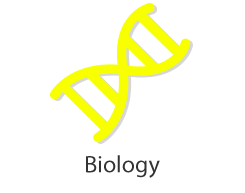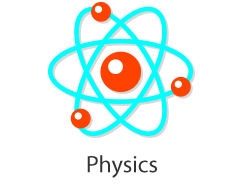USED ONE OF OUR LESSON PLANS?
Fill in our survey for a chance to win a Science North YETI mug! We will draw winners quarterly throughout the school year.
Fill in our survey for a chance to win a Science North YETI mug! We will draw winners quarterly throughout the school year.

Students will learn the principles of good experiment design, and then apply that knowledge to existing scientific or pseudoscientific works to evaluate their quality.

In this activity, students will build a model set of lungs and test it under different conditions which model diseases of the respiratory system.

Students will learn cell parts of plant and animal cells through a coding game. They will be able to pair organelles with a description of their function within a cell. Students will also practice coding skills by writing a code to indicate when the game has been won.
In this four-part lesson, students will learn all about health equity, starting by walking through the “seeing over the fence” analogy to understand how equity is different from equality. They will then develop further context for this issue by examining vaccine inequity as a case study. In part 3, one of Science North’s Indigenous Interns interviews a nurse at the Wikwemikong Health Centre on the challenges of achieving health equity in Indigenous communities. In the final section, the Many Nations, One Voice for Wellness team at Telus Spark will take students through a workshop on Dr. Christopher Emdin’s “Science Genius” method with health equity as the theme. Students will learn how to put their thoughts, feelings and experiences about this complex issue into rap and song.
* Internet connection required
In this two-part lesson, students will learn how scientific research is conducted and why scientific integrity is important in determining what sources of information we can trust. They will understand what can happen when a lack of scientific integrity leads to misconduct and explore scientific integrity with a real-world example of how we develop and test new vaccines. They will learn about the importance of understanding history and increasing diversity in science as they explore the contributions of scientists from different communities and backgrounds. Students will also learn the different parts of a research study and the signs of trustworthy research. Each learning objective is followed up by an online game or hands-on activity to reinforce the concepts.
* Internet connection required
In this lesson, students will understand the role the immune system plays. They will learn about the different types of pathogens, how they infect our bodies and the stages of infection. In the Agents of the Immune System GooseChase experience, students will work independently or as part of a team to complete the missions, learn about the immune system and collect points. Students' submissions in the GooseChase app will remain hidden from other students who participate in the Agents of the Immune System experience.

Students will work through an introduction to web development using HTML and CSS to create a website on climate change.

In this lesson, students will use a Microbit and the temperature sensor to track how heat levels change for closed systems with or without the presence of carbon dioxide.

This lesson plan contains three different activities that use the Microbit and its sensors to explore various properties of light.

In this post activity to the school program, Neuroscience, students will learn the difference between reaction and reflex neural pathways. They will simulate what happens in their body during a reaction and during a reflex to better understand why there is a difference between the two.

Students will learn appropriate terminology related to climate change, including, but not limited to: albedo, anthropogenic, atmosphere, cycles, heat sinks, and hydrosphere by coding digital cue cards.

Students will learn about the greenhouse effect, how it contributes to climate change, and how it influences Earth’s climate by coding digital cue cards.
In this lesson, Students will learn about the laws of reflections through an inquiry-based introductions activity and then apply what they learn to create a laser maze. In the main portion of the lessons, students will be tasked with building a laser system that can be used to protect 9 precious gems in an exhibit hall. Their goal will be to plan, design and build a system of mirrors that reflect a single laser beam to ensure that each of the gems is protected from theft. Students will be asked to demonstrate their laser maze and present how it is used to protect their gem collection. This lesson supports the grade 10 science curriculum and includes a variety of vocabulary strategies that will support FSL learners.

In this lesson students will learn about different forms of electromagnetic radiation, and the devices that are powered by EM radiation. This lesson is intended for the Applied level, but could be used at the Academic level as well.

In this lesson students will make their own cell phone projector. They should have an understanding of how to draw simple ray diagrams. This lesson is intended for the Applied level, but could be used at the Academic level as well.

This is lesson one of two lessons on UV radiation. Students should have a basic understanding of the electromagnetic spectrum. In this lesson students will plan an experiment on UV beads. This lesson is intended for the Applied level, but could be used at the Academic level as well.

This is lesson two of two lessons on UV radiation. Students should have a basic understanding of the electromagnetic spectrum. Students need the completed UV Beads Inquiry Plan from Part 1. Students will do their experiment from Part 1. This lesson is intended for the Applied level, but could be used at the Academic level as well.

In this lesson students will dissect a cow/sheep eye. They should have some experience drawing ray diagrams with converging lenses. This lesson is intended for the Academic level.

This is lesson one of two lessons on the effects of climate change on coral reefs. In this lesson students will learn the importance of corals and how climate change may be affecting them. They will also learn how to manipulate variable to do a scientific test. This lesson is intended for the Academic level.

This is lesson one of two lessons on the effects of climate change on coral reefs. In this lesson students will learn the importance of corals and how climate change may be affecting them. They will also learn how to manipulate variable to do a scientific test. This lesson is intended for the Academic level.
Students will be amazed to see what appears to be a mind boggling magic trick. With an easily constructed ‘Science Rope Tube’, teachers will show students how all four ends of the rope tube seem (astonishingly) connected. Students will make observations and inferences, create models, and try to falsify and improve those models.
Introduce to students the idea that the scientific method isn’t just one single way of doing things.

In groups, students will conduct a laboratory inquiry to determine whether the root system that draws water up into a plant is more important than the shoot system, which is responsible for photosynthesis.

In this lesson, students will take part in an interactive simulation to demonstrate the frequency of the spread of infection (ie. AIDS, Sexually Transmitted Diseases, etc). They will then choose an abnormality (ie. cancer), disease or virus to further explore. Lastly, each student (or small groups of students) will research their topic to create a public health announcement educating the public about their findings in a “marketplace” setting.

Students will learn about acidic, basic, and neutral solutions through indicators and pH levels. Students will create their own homemade pH indicators using isopropyl alcohol, warm water, and red cabbage leaves. Students will then compare their homemade indicators to the litmus paper provided by testing each household substance and determining their pH levels based on the colour changes. Finally, students will identify a “mystery”solution using their indicators.

Students will learn about neutralizing acidic compounds using basic compounds. Students will be given two different household acids, phenolphthalein indicator, and one base. Students will add the indicator to the acid, which will show no immediate chemical change, as phenolphthalein appears colourless in acids. Slowly, students will introduce the base to the acid-indicator mixture, until the latter turns completely pink, indicating the presence of a base. Students will then record how much base they have added to one acid, and compare it to how much was added to the other acid. Finally, students will exhibit their knowledge of chemical formula composition by completing the formula on their worksheet entitled “Neutralizing Acids & Bases.”